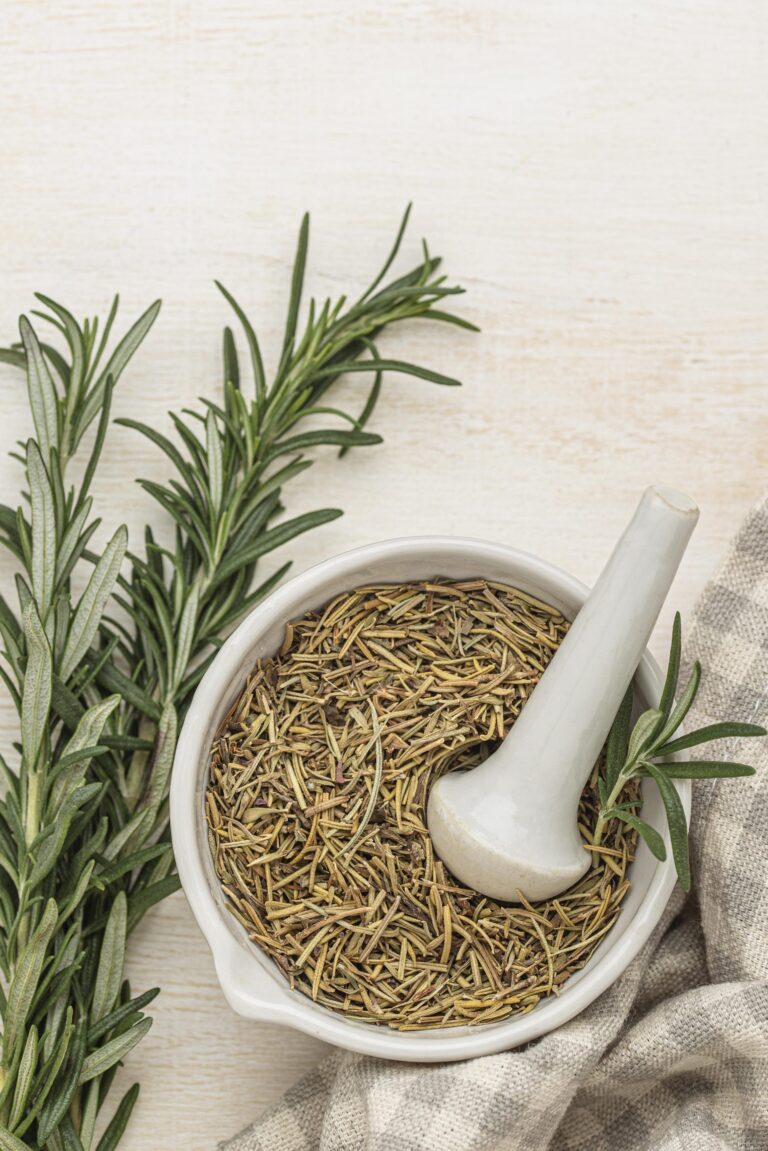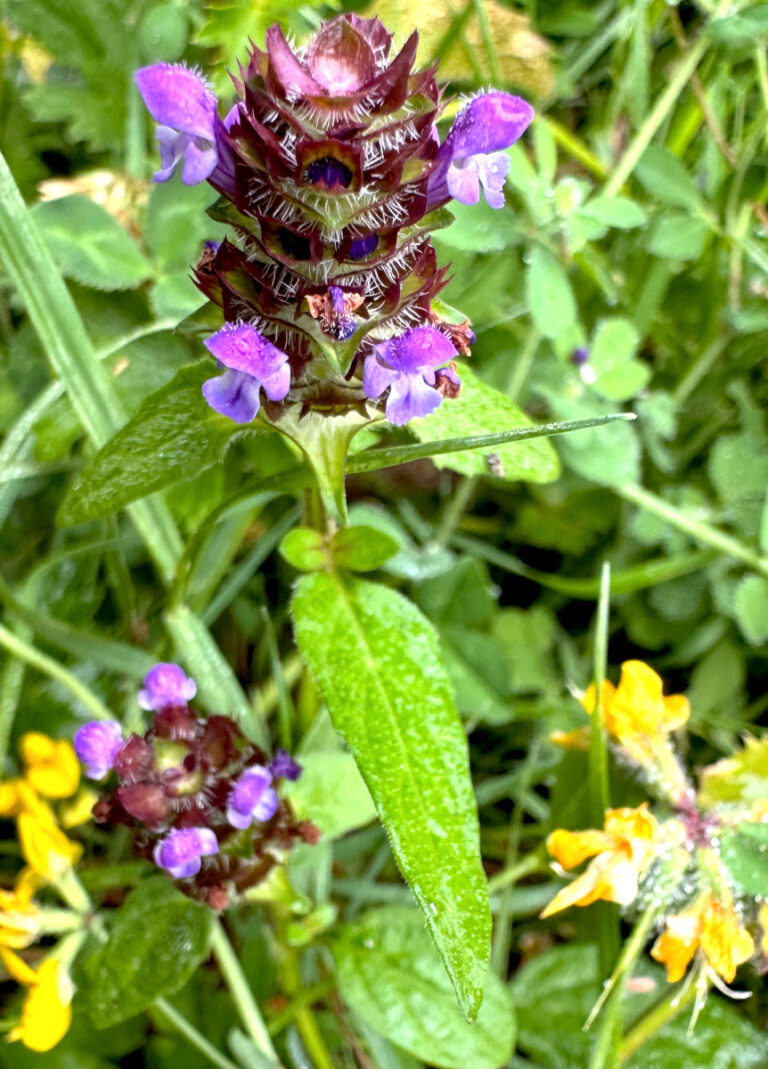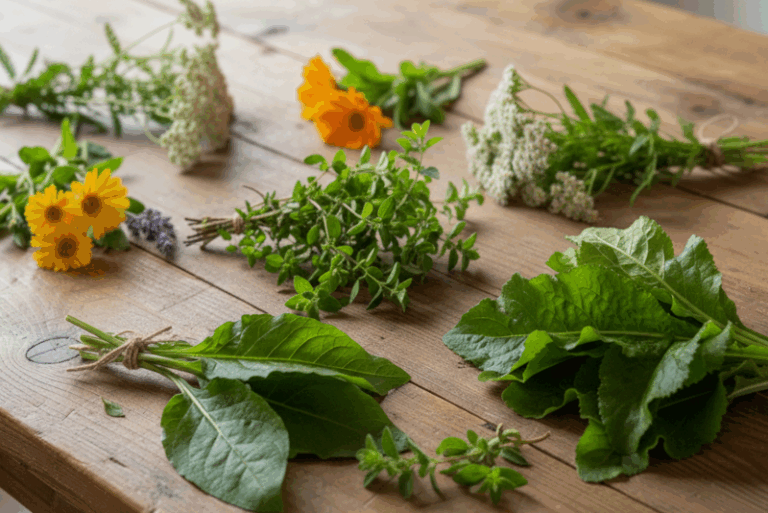Medicinal Properties of Purple Dead Nettle – More Than a Weed
You’ve probably seen purple dead nettle growing in your yard and probably labeled it as a weed. The medicinal properties of purple dead nettle make it more than just a weed. You’ll never look at it the same again. (That’s a good thing!)
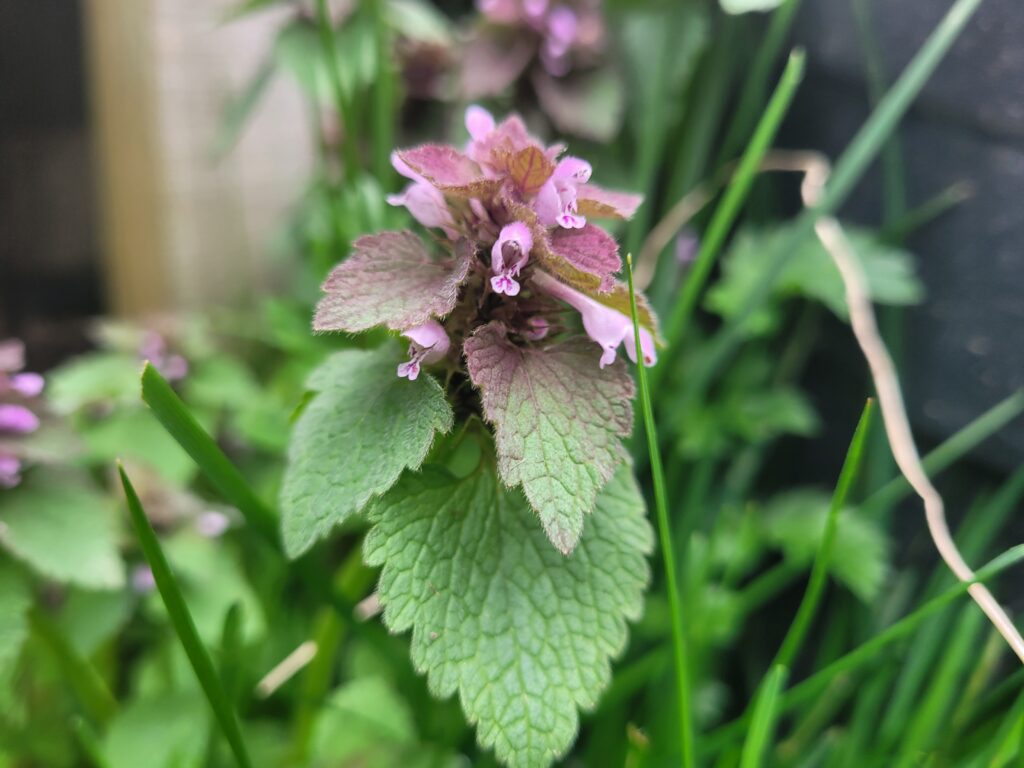
Overview of the Purple Dead Nettle Plant
Purple dead nettle is a member of the mint family and is found in a lot of people’s backyards. It’s generally thought of as a weed and is often overlooked and mowed down. But once you learn a little more about this plant, you may want to go ahead and pick some before mowing the rest down.
This plant has the square stem that is one of the main distinguishing features of the mint family of plants. It’s leaves grow on opposite sides of the stem, in pairs, and mainly grow towards the top of the stem. You don’t see them much around the bottom. The leaves generally point down and are greener at the bottom and become more purple to purplish red towards the top of the stem. They are a bit fuzzy if you rub them between your fingers. Between the leaves, the plant produces very small purple/pink flowers.
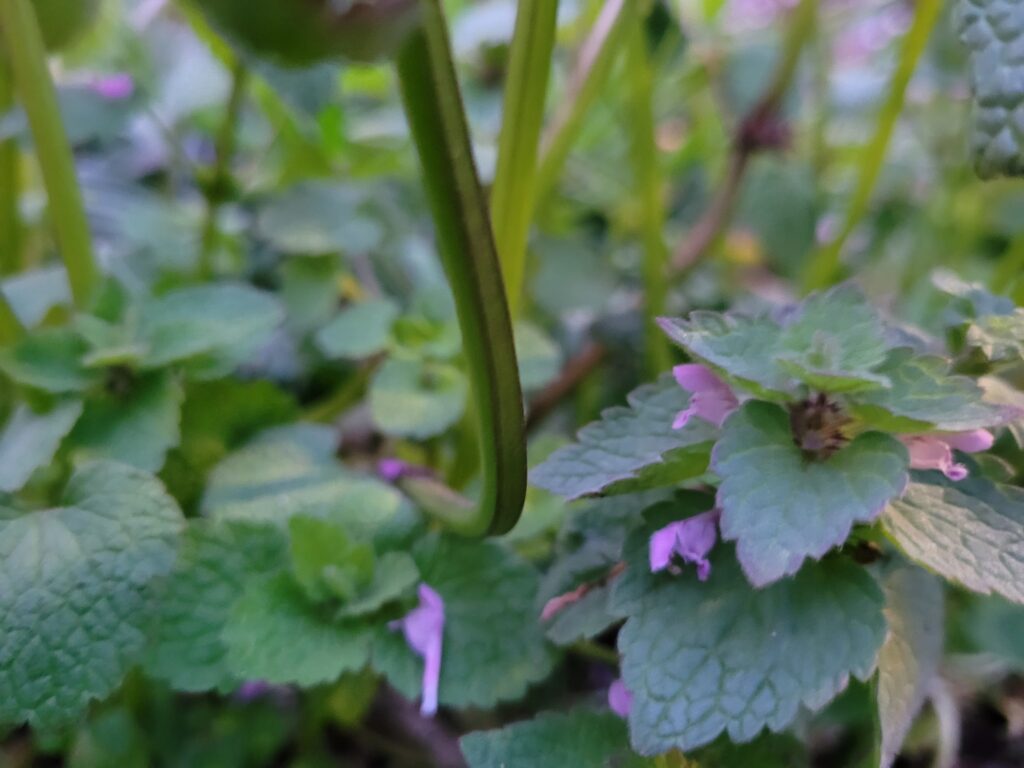
Purple dead nettle is often confused with henbit. The easiest way for me to tell them apart is that the leaves of purple dead nettle are a bit fuzzy while henbit leaves are smooth. Henbit flowers and leaves also tend to point upwards while purple dead nettle leaves and flowers point down.
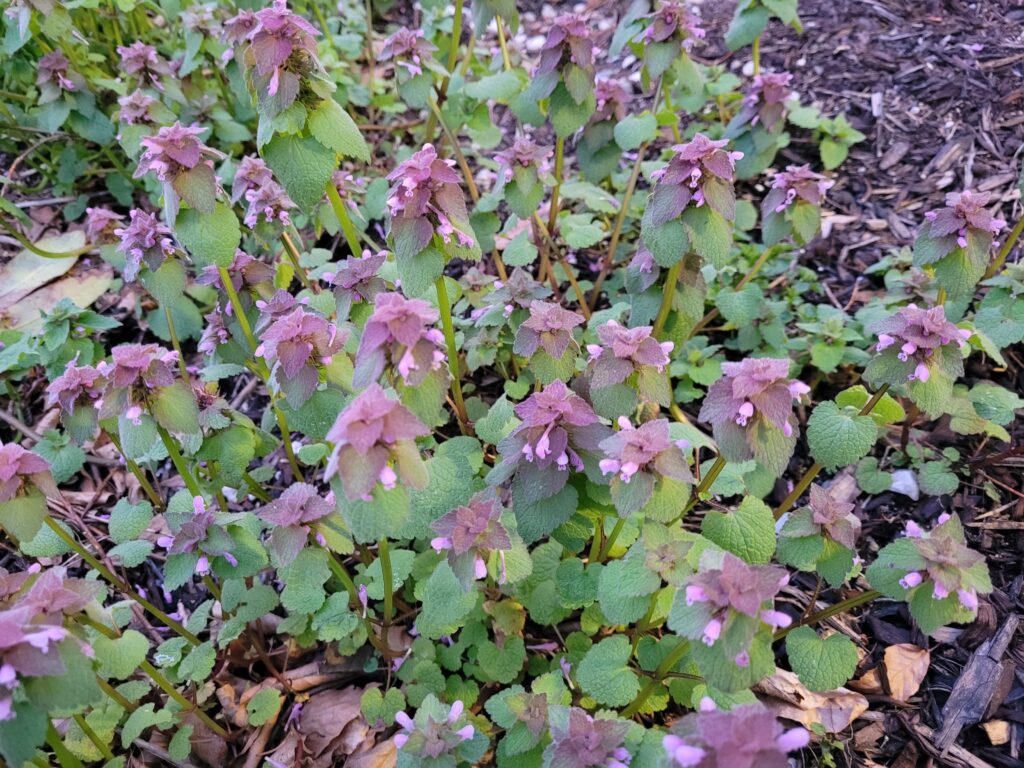
Medicinal Properties of Purple Dead Nettle
*I am not a doctor and this is not medical advice. Consult a doctor before using herbs for medicinal purposes.
For Wound Care and Bleeding
Being from the mint family, Purple dead nettle does like to kill things. That’s a property found in a lot of mints. In this case, bacteria infections are the biggest target. The plant has good antibacterial properties to help combat bacterial infections. It does have some antimicrobial properties as well.
Purple dead nettle is also known as a vasoconstrictor. What that means is that it can help blood vessels constrict to help slow and stop bleeding. It can also act as a haemostatic, meaning it can reduce the amount of time it takes for blood to clot. These two properties together make it a great plant for bleeding, both internally and externally. Of course, if you’re bleeding internally go straight to the ER! There are times when modern medicine is the best option, internal bleeding is one of those times.
Wounds generally come with some pain, and purple dead nettle may be able to help with that as well. It has anti-inflammatory properties that can help reduce inflammation and the pain associated with it. It is also considered an antinociceptive. That’s the sciency work describing the ability to block pain from reaching neurons. That means it can help block pain when needed.
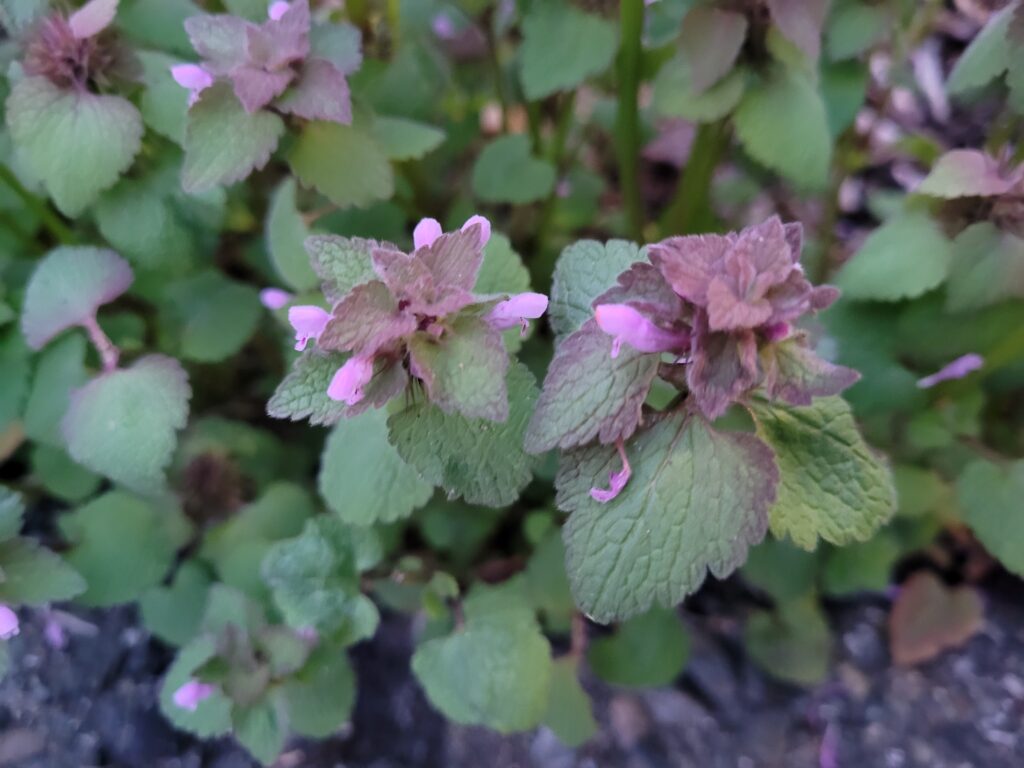
For the Digestive System and Liver
No one likes digestive issues, but we all get them from time to time. Purple dead nettle can help regulate this system. It has anti-diarrheal properties that can help firm everything up when it gets a little runny. It can also have a bit of a laxative effect if you’re having trouble going at all.
Not only can it regulate bowel movements, it’s also a diuretic meaning it can help you urinate. This can be beneficial when you need to clear out toxins from your body. Urinating more can also flush out your system to help get rid of an UTI. This is how I’ve personally cleared a couple of them in the past, I know it works!
A hepatoprotective is a substance that helps prevent damage to the liver or help reduce damage if it has occurred. Purple dead nettle contains components that are hepatoprotective, making it great for your liver as well.
Colds, Coughs, Flu, and Allergies
Everyone has experienced the sneezing, coughing, and stuffiness of the flu, colds and/or allergies. If you are one of the few that haven’t, you’re lucky!
When you’re suffering from a cold, flu, or allergies you often need an expectorant: something to help cough up the mucous that’s lodged in your lungs. Purple dead nettle can act as an expectorant; it won’t stop the cough but it can help make it more productive by helping get the mucous out of your airways.
It’s also considered a mild antihistamine and can help with seasonal allergies. There are other plants that are great antihistamines, such as it’s cousin stinging nettle, but purple dead nettle can help with this, too. Allergies are no match for the two paired together!
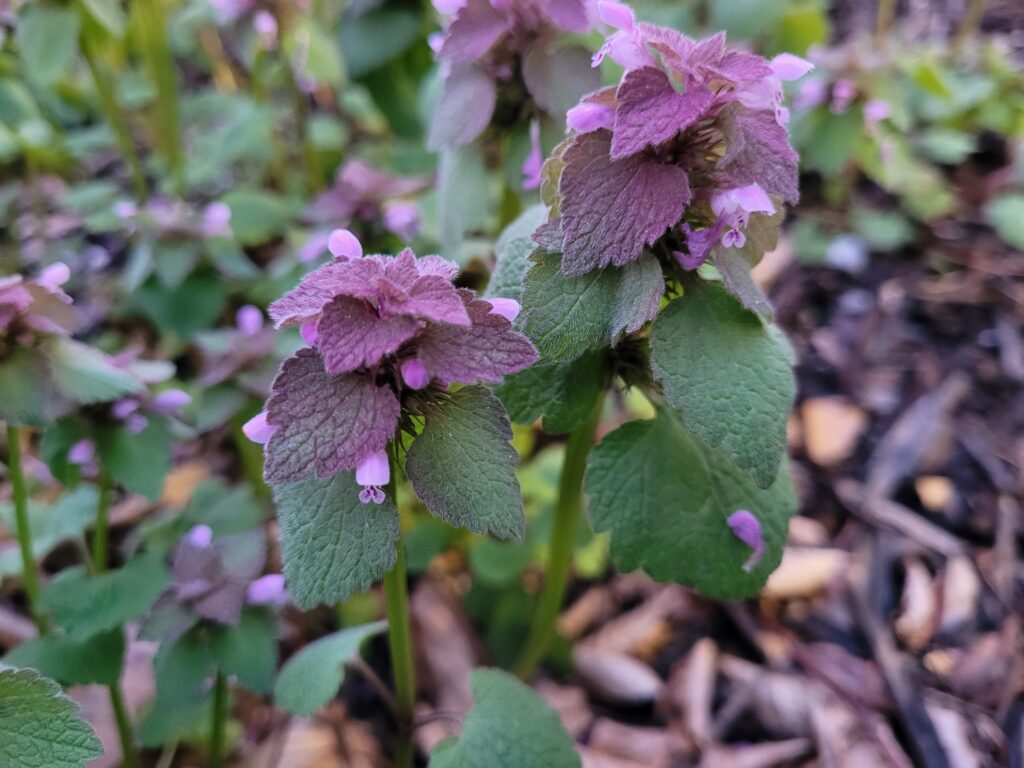
Nutrition
The purple dead nettle plant is an edible plant that ranks up there with other leafy greens such as spinach and kale as a powerhouse of nutrition. It’s loaded with vitamins C, A, and K. It also has a high amount of iron and fiber making it a wonderful addition to your next salad.
Pin It For Later
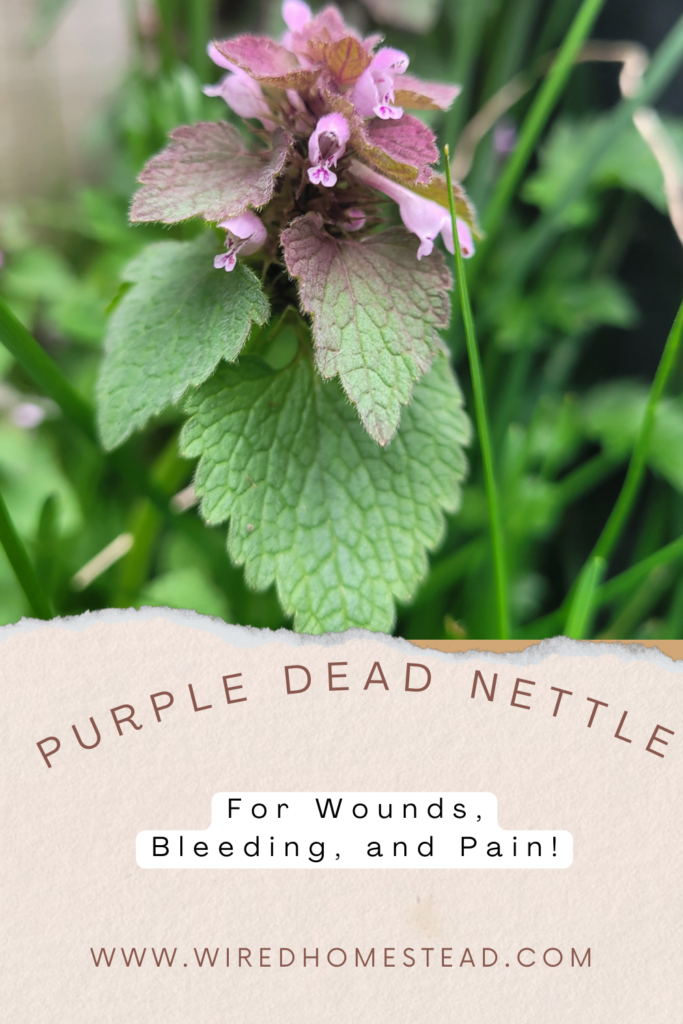
Sources:
Haemostatic activity of butanolic extracts of Lamium album and Lamium purpureum aerial parts
Quantifying of bactericide properties of medicinal plants
In vivo anti-inflammatory and antinociceptive actions of some Lamium species
Five New Phenylethanoid Glycosides from the Whole Plants of Lamium purpureum L.
Benzoxazinoids and iridoid glucosides from four Lamium species


